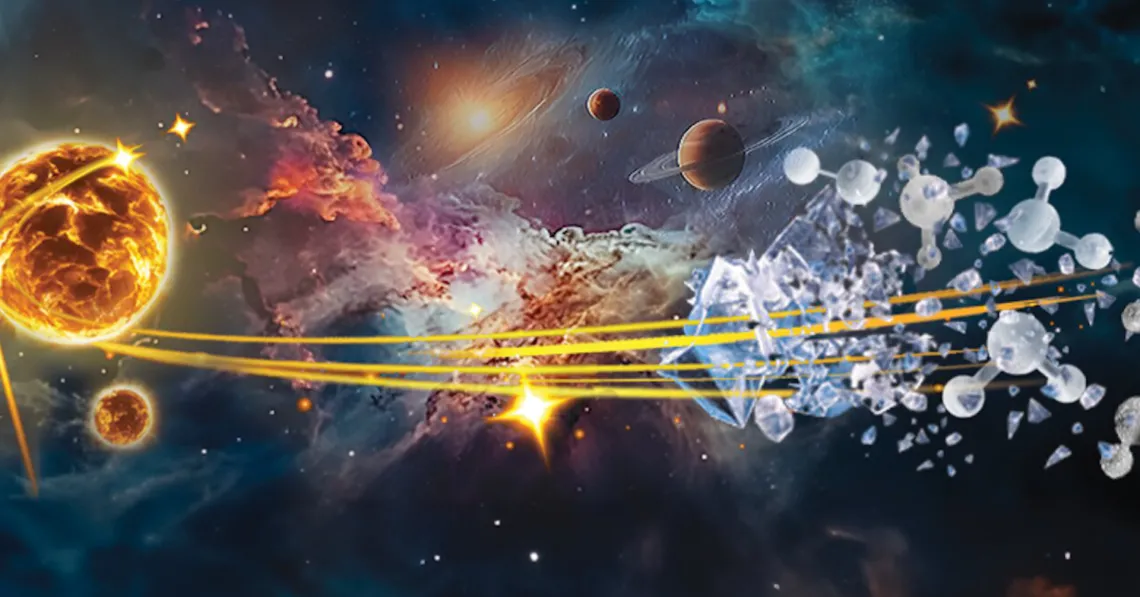Crucial Building Blocks of Life on Earth Form More Easily in Outer Space

The origin of life on Earth is still enigmatic, but we are slowly unraveling the steps involved and the necessary ingredients. Scientists believe life arose in a primordial soup of organic chemicals and biomolecules on the early Earth, eventually leading to actual organisms.
It's long been suspected that some of these ingredients may have been delivered from space. Now a new study, published in Science Advances, shows that a special group of molecules, known as peptides, can form more easily under the conditions of space than those found on Earth. That means they could have been delivered to the early Earth by meteorites or comets—and that life may be able to form elsewhere, too.
The functions of life are upheld in our cells (and those of all living beings) by large, complex carbon-based (organic) molecules called proteins. How to make the large variety of proteins we need to stay alive is encoded in our DNA, which is itself a large and complex organic molecule.
However, these complex molecules are assembled from a variety of small and simple molecules such as amino acids—the so-called building blocks of life.
To explain the origin of life, we need to understand how and where these building blocks form and under what conditions they spontaneously assemble themselves into more complex structures. Finally we need to understand the step that enables them to become a confined, self-replicating system—a living organism.
This latest study sheds light on how some of these building blocks might have formed and assembled, and how they ended up on Earth.
Read more: Serge A. Krasnokutski et al, Formation of extraterrestrial peptides and their derivatives, Science Advances (2024). DOI: 10.1126/sciadv.adj7179
